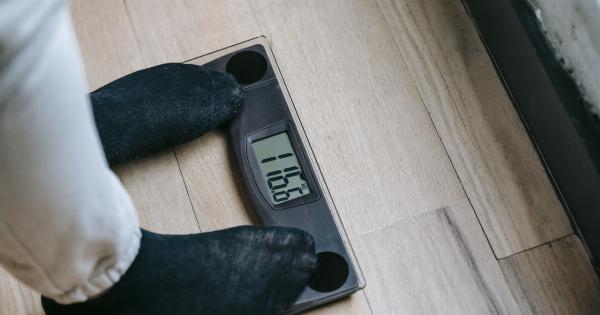Weight is an important aspect of our health and wellbeing. It is crucial to maintain a healthy weight to prevent various medical conditions such as heart disease, diabetes, and obesity.
However, it is equally important to weigh yourself correctly to get accurate readings. In this article, we will discuss the correct way of weighing yourself and how to interpret the results.
Step 1: Choose the right type of scale
Firstly, it is essential to choose the right type of scale. There are two commonly used types of scales: mechanical and digital. Mechanical scales have a dial that shows the weight, whereas digital scales have a digital display.
Digital scales are more accurate than mechanical scales and are the preferred choice for accurate readings.
Step 2: Weigh yourself at the right time
The timing of weighing yourself is an important factor. For the most accurate readings, weigh yourself first thing in the morning, preferably right after using the bathroom, and before consuming any food or beverage.
This ensures that your weight is not influenced by any external factors.
Step 3: Wear the right clothing or none at all
Clothing and shoes can add extra weight to your body, so it is important to wear the right clothing or none at all when weighing yourself. It is recommended to weigh yourself in light clothing or underwear to get an accurate reading.
However, if you choose to weigh yourself with clothing on, make sure to wear the same clothing every time you weigh yourself.
Step 4: Stand correctly on the scale
Standing correctly on the scale is essential for accurate readings. Stand with your feet shoulder-width apart, with your weight evenly distributed on both feet. Keep your back straight and look straight ahead.
Avoid leaning forward or backward or holding onto anything for support.
Step 5: Be consistent
To get the most accurate readings, it is crucial to be consistent with your weighing routine. Weigh yourself at the same time every day, on the same scale, and wearing the same clothing or none at all.
This will ensure that any changes in your weight are accurately reflected over time.
Interpreting the results
Now that you know how to weigh yourself correctly let’s discuss how to interpret the results. A healthy weight is determined by the Body Mass Index (BMI). BMI is calculated by dividing your weight in kilograms by your height in meters squared.
A BMI of 18.5-24.9 is considered normal, 25-29.9 is considered overweight, and 30 or above is considered obese.
However, BMI is not always an accurate measure of health, as it does not account for muscle mass, bone density, and other factors.
If you are concerned about your weight, consult a healthcare professional, who can perform various tests, including body fat measurement, to determine your overall health status.
The Bottom Line
Weighing yourself is an important tool in maintaining a healthy weight. By following the correct weighing techniques and interpreting the results accurately, you can achieve your weight goals and maintain good health.
Remember, consistency is key, and always seek professional advice in case of any concerns.































